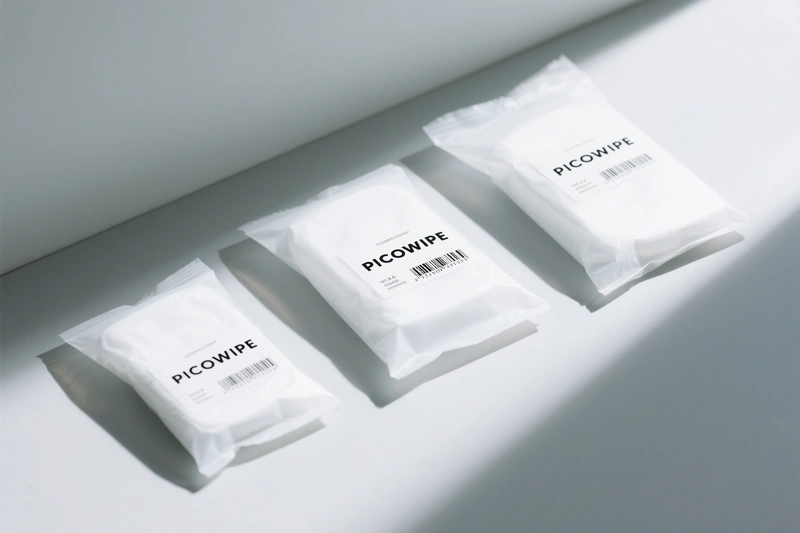By [email protected] — Charting the depths of expertise
There is no uniform industry standard for the model names of cleanroom wipes and nonwoven wipes in the domestic market. However, because the market was initially dominated by imported products, their naming conventions have influenced domestic manufacturers. These model names are typically a combination of numbers and letters. At the same time, to facilitate production management and communication, factories need to distinguish new materials with different properties using new model names. The naming is entirely subjective to the manufacturer and may or may not be related to factors like size, basis weight, or fiber type.
So, what are the patterns behind these model names? Let's examine the naming logic of mainstream cleanroom wipes and nonwoven wipes on the market.
Common Naming Conventions for Nonwoven Cleanroom Wipes
The model names for nonwoven cleanroom wipes mainly use numbers to distinguish basis weight, size, and specifications.
0609: This is a widely used term in the industry that has essentially become synonymous with a specific type of nonwoven wipe.
06: Represents a basis weight of about 60 g/m². Initially, it stood for 68g (related to the imported TX609 wipe at 68g), but domestic manufacturers gradually reduced the weight to 60g or even lower to cut costs, while the "06" designation was retained. 09: Represents the standard size of 9 inches × 9 inches (approx. 23cm × 23cm). Material: The classic composition is 55% cellulose (providing excellent absorbency) and 45% polyester (providing tensile strength), produced through a non-chemical bonding process. M-3: The naming of the M-series of nonwoven wipes is mainly related to their size and structure, particularly represented by brands like Japan's BEMCOT. BEMCOT's M-3II nonwoven wipe offers better absorbency, solvent resistance, and lower particle generation. While domestically produced M-3 wipes also perform well, they may fall short of imported ones in some high-end applications.
Size: This series uses different suffixes to distinguish sizes: M-3: refers to a 25cm x 25cm wipe; M-2: refers to a 20cm x 20cm wipe; M-1: refers to a 15cm x 15cm wipe.
Structure: A key feature of the M-series is its common use of a hydroentangled, apertured design. This structure allows it to absorb moisture and oil more effectively and "lift away" dust particles better.
Material: The material composition is diverse, ranging from 100% polyester to polyester-viscose blends, with different manufacturers using different ratios. Material differences can lead to naming variations: for example, the PICOWIPE factory uses model numbers like "M-3 4#" and "M-3 15#" to distinguish M-3 series products made from different materials.
Common Naming Conventions for Cleanroom Wipes
The naming for cleanroom wipes is more complex, combining numbers and letters that may relate to basis weight, size, material, pattern, and edge sealing process.
1009SLE / 1009DLE Cleanroom Wipes: This is one of the most widely used polyester cleanroom wipes on the market. Its name can be broken down as follows:
Therefore, 1009SLE refers to a 9-inch, 120g, rib knit, laser-edged polyester cleanroom wipe.
1009: Refers to a 9-inch polyester cleanroom wipe with a basis weight of 120 g/m². However, products in the 100-120g range are also often called 1009.
S: Represents a rib knit pattern.
D: Represents an interlock knit pattern.
LE: Stands for Laser Edge sealing. The absence of LE indicates a knife-cut edge.
4008 / 4009 Cleanroom Wipes: The core difference between these two models is the fineness of the fiber, which directly affects wiping performance and price.
4008: Refers to a 9-inch sub-microfiber cleanroom wipe, typically made of 100% polyester, with a basis weight of about 120g. 4009: Refers to a higher-performance 9-inch microfiber cleanroom wipe, typically made of 80% polyester and 20% nylon, with a higher basis weight of up to 160g (sometimes 180g), offering stronger decontamination and adsorption capabilities. 3008 / 3009 Cleanroom Wipes:
3008: 9-inch, sub-microfiber cleanroom wipe, 95g. 3009: 9-inch, sub-microfiber cleanroom wipe, 100g.
Based on these patterns, one can generally assume:
A model ending in 8 is usually 5-10g lighter than one ending in 9 (the same logic applies to letter suffixes like A, B, C).
A model ending in 8 or 9 is typically 9 inches. An ending of 6 indicates 6 inches, and so on (common sizes are 4, 6, and 9 inches).
Models starting with 1 or 2 are mainly standard polyester fiber, 100-120g. Models starting with 3 are sub-microfiber, ≤100g. Models starting with 4 and up are microfiber, ≥120g.
Note: Naming conventions vary widely among domestic manufacturers, and there is no absolute standard. The summary above is for reference only.
PICOWIPE's Naming System for Cleanroom Wipes and Nonwoven Wipes
PICOWIPE's model naming generally aligns with industry conventions for common models like 0609, M-3, 1009, and 4009:
Starts with 1, 2: Mainly standard polyester fiber. Three-digit numbers (like 202) or three digits with a letter (like 502B) are typically standard fiber. Models starting with 1 are mainly 100-120g. Models starting with 2 or having three digits are >120g, e.g., 602 and 202 are both 140g standard fiber wipes. Starts with 3, 4: Mainly sub-microfiber. Models starting with 3 are usually ≤100g, like the 95g 3009 (Exception: models starting with 33 are generally >100g, like the 3307 random weave microfiber at 110g). Starts with 4, 5, 6, 7: Mostly microfiber. Three-digit models starting with 402 are generally high-density microfiber materials. Starts with 8: Mainly microfiber roll wipers (Exception: 8202 is a high-density microfiber wipe). Starts with 9: Mainly antistatic cleanroom wipes with conductive yarn (available in standard, sub-microfiber, and microfiber). Starts with 11: Mainly sub-microfiber.
As seen above, naming can be both systematic and arbitrary. When purchasing, we recommend you specify your exact needs (e.g., size, basis weight, fiber fineness, cleanliness class) to a PICOWIPE sales representative or describe your use case, and we will recommend the most suitable product for you.


